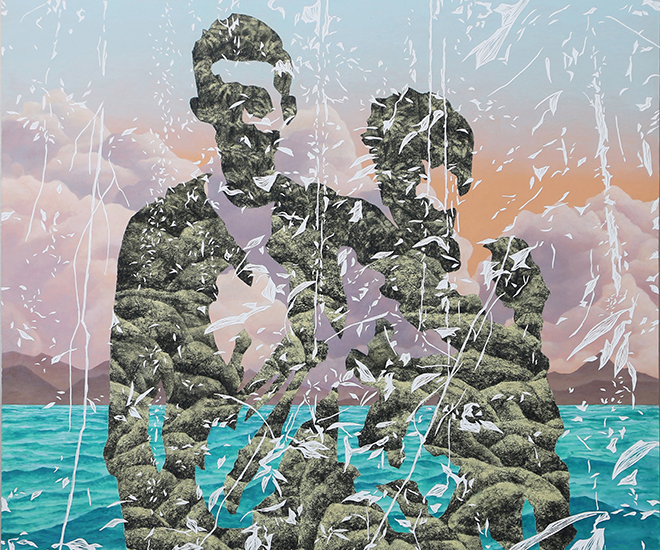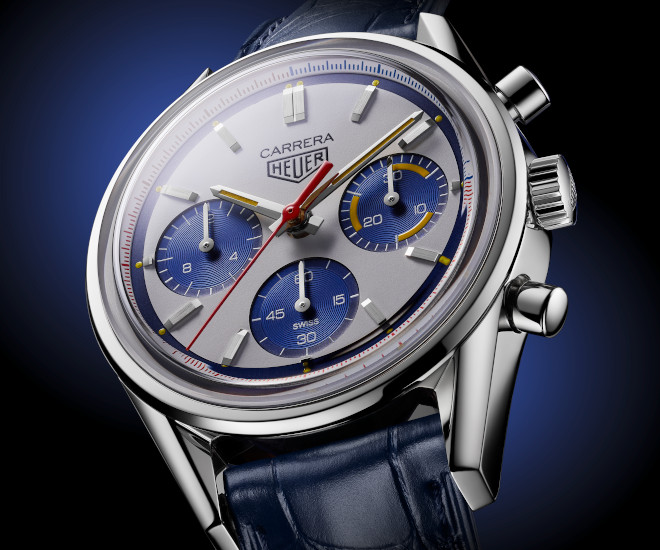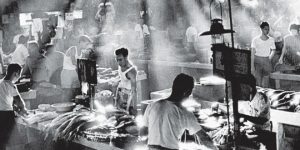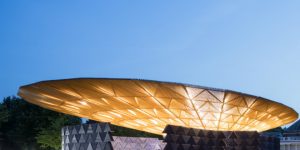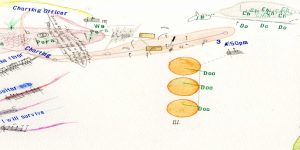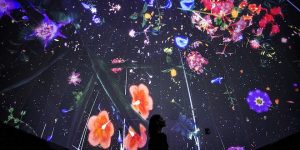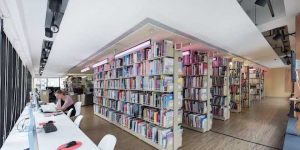Exhibition: ‘The Oceanic’ at NTU CCA explores human intervention in the ocean environment
A new exhibition at NTU CCA Singapore poses critical questions about human intervention in oceanic environments

Lisa Rave, ‘Europium’, 2014, still from HD video, sound, 21 min
Who owns the ocean, and who has the authority to govern it? These questions are repeatedly brought to the surface in ‘The Oceanic’ at NTU Centre for Contemporary Art (NTU CCA) Singapore’s exhibition on extensive human interventions in oceanic biospheres. Running from 9 December 2017 to 4 March 2018, the exhibition is part of ‘The Current’, an ongoing research initiative by Thyssen-Bornemisza Art Contemporary–Academy (TBA21–Academy) which investigates environmental and socio-political issues.
At the helm is curator and NTU CCA’s founding director Professor Ute Meta Bauer, who led the project’s first cycle of expeditions from 2015 to 2017. Joining her were ‘The Current’ Research Fellows: 12 artists, composers, academics and filmmakers who contributed to the current exhibition. The team journeyed aboard TBA21– Academy’s vessel Dardanella to the Pacific Ocean archipelagos of Papua New Guinea (2015), French Polynesia (2016), and Fiji (2017).
Bauer explains the rationale behind selecting these locations: “We wanted to focus on remote island groups that are immediately affected by climate change and human interventions. These areas contribute less than 2 percent to climate change but suffer 98 percent of the environmental impact caused by globalisation.”
The first expedition to Papua New Guinea was undertaken with a group of 4 artists, and focused on alternative economies relating to the Kula Ring, a ceremonial exchange system practiced in the Trobriand Islands. On display are works such as Newell Harry’s (Australia) black-and-white photo series ‘(Untitled) Nimoa and Me: Kiriwina Notes’ (2015–16) documenting exchange practices, and Laura Anderson Barbata’s (Mexico/ United States) striking costumes incorporating items from artisans in Milne Bay Province.

Newell Harry, An old Mawali Kula shell of elder, Hon. Camillus Mlabwema. Kotovila Village, Yalumgwa, Kiriwina Island, Papua New Guinea, 2015, documentation.
The journey to French Polynesia in 2016 explored the still neglected long-term impact of nuclear experiments in the Pacific. Atolls Mururoa and Fangataufa were the sites for 193 nuclear tests by the French Military from 1966 until 1996. In a bid to seek environmental justice and address the exploitation of resources in the region, artist Nabil Ahmed (Bangladesh/United Kingdom) collaborates with other researchers to call for an Inter-Pacific Ring Tribunal (INTERPRT) (2016–ongoing).
The project’s final expedition to Fiji turned the lens to the tradition of the Tabu, an indigenous rule system that recently became known for marine conservation and resource management. Amongst the participants was anthropologist Guigone Camus (France), whose documentation and materials from extensive research in Kiribati are displayed in The Lab, the Centre’s project space. Another expeditioner Lisa Rave’s film ‘Europium’ (2014) explores the link between colonialism, ecology, and currencies through an investigation of deep-sea mining.
On her curatorial process and working with the contributors, Bauer speaks of the emphasis on knowledge building and exchange. “The current project is very much aligned in the way that we maintain ongoing conversations with the contributors and sustain long term relationships,” she notes. “For instance, before Nabil Ahmed and writer Filipa Ramos (Portugal/ United Kingdom) took part in the second expedition, they participated in the first post-expedition Convening. Similarly, filmmaker and photographer Armin Linke (Italy/Germany) brought continuity by being the only Fellow to participate in all 3 research trips.”

Armin Linke, ‘OCEANS. Dialogues between ocean floor and water column’, 2017, four-channel video, installation, 40 min, dimensions variable.
Given the varied skillsets of the contributors, a significant highlight of the exhibition is its combination of various mediums such as video installations, photography, physical object displays, and research documentation. “The works all originate from diverse research interests, but function like parts of a larger puzzle that start to take shape. What is depicted can be better recognised with each additional piece,” says Bauer.
The idea of the disparate segments merging as part of a larger tapestry is also reflected in the transdisciplinary approach to ‘The Oceanic’. Banding together advisors working in various fields, from artists and curators, to scientists, marine biologists, anthropologists and policymakers, Bauer envisions the exhibition to speak to a broader audience, conveying the urgency of climate issues and calling the public to be active participants of change.
It is also Bauer’s hope that conversations about environmental issues carry on long after ‘The Oceanic’ concludes. The exhibition serves as a starting point for NTU CCA Singapore’s new overarching research topic ‘CLIMATES. HABITATS. ENVIRONMENTS’. Next up at the Centre is ‘The Current’ Convening #3’ (25th -27th Jan 2018), an event with roundtables, workshops and screenings themed around modalities of exchange and shared responsibilities.
Another project in the works is the first exhibition in Southeast Asia by Paris-based Lebanese artist Tarek Atoui, investigates diverse notions of the sonic and modes of listening with regards to the natural environment, taking place from March to June 2018.
More information at ntu.ccasingapore.org.
This article was written by Rebecca Wong for Art Republik.

